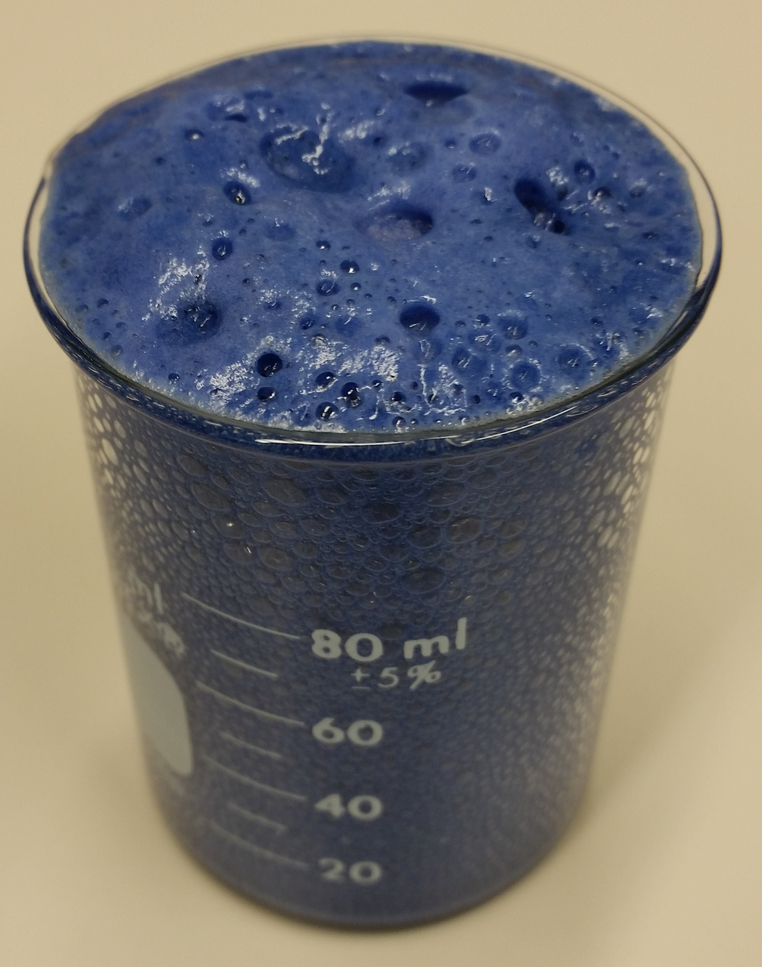 Post by
Post by
Andrew Norris, MD PhD
Director, Pediatric Endocrinology & Diabetes
University of Iowa Stead Family Children’s Hospital
“Don’t just look at the pH when interpreting a blood gas. If you only look at the pH, you will likely underestimate or even overlook metabolic acidosis.“
Metabolic acidosis is frequently encountered in clinical medicine. It is crucial that clinicians be able to recognize metabolic acidosis, characterize the specific type of acidosis, and assess its severity. This primer is focused on metabolic acidosis, and does not delve into other acid-base disturbances (i.e. metabolic alkalosis, respiratory acidosis and respiratory alkalosis).
Outline/topics
Pearls
Quick cookbook
Important pitfalls
What is metabolic acidosis?
◦ Background – soda & vinegar
◦ Metabolic acidosis – a simple definition
◦ Metabolic acidosis – an even simpler definition
◦ Symptoms of metabolic acidosis
Diagnosis of metabolic acidosis
◦ Laboratory tests related to metabolic acidosis
◦ Blood gas interpretation in metabolic acidosis
Causes of metabolic acidosis
◦ Major metabolic acidosis categories
◦ Some common causes of metabolic acidosis with elevated anion gap
◦ Some common causes of metabolic acidosis with normal anion gap
◦ Mixed acid-base disorders
Footnotes
Pearls
- A low serum bicarbonate usually indicates metabolic acidosis. For this reason, serum bicarbonate is a effective test for metabolic acidosis under most conditions.
- Don’t just look at the pH when interpreting a blood gas. Metabolic acidosis is usually accompanied by a significant degree of respiratory compensation that brings the pH back towards normal. If you only look at the pH, you will likely underestimate or even overlook metabolic acidosis.
- Determine the underlying cause. Metabolic acidosis has numerous possible causes, many of which are medical emergencies requiring timely diagnosis and institution of specific therapy.
- An anion gap can help determine the type of metabolic acidosis present.
Quick cookbook
- Obtain laboratory test(s): blood gas and/or serum bicarbonate
- Interpret test results
- Serum bicarbonate: low value indicates metabolic acidosis
- Blood gas: must be fully interpreted, including
- pH: low value indicates acidosis; high value indicates alkalosis
- calculated bicarbonate: low value indicates metabolic acidosis
- base excess: negative values below the reference range indicate metabolic acidosis
- Obtain anion gap if metabolic acidosis is present.
- If elevated: possible etiologies include diabetic ketoacidosis, lactic acidosis, specific inborn errors of metabolism, severe renal failure, or poisoning.
- If normal: possible etiologies include GI or renal bicarbonate losses, compensation for chronic respiratory alkalosis, or hyperchloremic acidosis during resolution of DKA.
- Determine the underlying cause: using additional diagnostic tests and clinical reasoning
- Treat underlying cause.
Important pitfalls
- Failure to fully interpret a blood gas. Often, acute metabolic acidosis is accompanied by a substantial degree of respiratory compensation (i.e. Kussmaul breathing).
- Failure to determine the underlying cause. It is critical to correctly diagnosis the underlying etiology that has caused the metabolic acidosis. Some of the common causes of metabolic acidosis are medical emergencies requiring urgent specific treatments.
What is metabolic acidosis?
Background – soda & vinegar

The body uses a bicarbonate buffering system for maintenance of acid-base status. This is a system you may have learned as a child when playing experimenting with baking soda and vinegar. The chemistry is simple, and can be written as follows:
HCO3– + H+ ⇋ H2O + CO2 (a)
In health, by controlling the amount of bicarbonate (HCO3–, a base) and carbon dioxide (CO2) in the blood, the body is able to maintain pH near 7.40.
The same system is at play with baking soda and vinegar. Baking soda contains HCO3–. Vinegar is an acid, and supplies H+. When the two are combined, water and carbon dioxide gas are formed. The carbon dioxide bubbles are the fun part. The more important part, at least from a physiological view, is what happens to the pH. After equilibrium is reached, if vinegar is in excess, the pH will be acidic. Conversely, if bicarbonate is in excess, then the pH will be basic.
Metabolic acidosis – a simple definition
Metabolic acidosis occurs when the amount of acid (H+) in the blood is too high or when the amount of bicarbonate (HCO3–) is too low. (b)
Metabolic acidosis – an even simpler definition
Metabolic acidosis is present when the amount of bicarbonate (HCO3–) in the blood is too low.
Notice that this definition omits the “excess acid (H+)” part of the definition. To understand why this part of the definition can be omitted, we can turn back to the vinegar / soda experiment. When vinegar (a source of H+) is added to bicarbonate, the two react to form CO2 + H2O. Bicarbonate is depleted as this reaction proceeds. The same happens in the body when excess H+ is present – bicarbonate is depleted (c) and the serum HCO3– drops (d) .
Symptoms of metabolic acidosis
Acute metabolic acidosis is often accompanied by Kussmaul respirations, as the body attempts to reduce pCO2 in order to normalize pH. This respiratory pattern becomes more pronounced as the acidosis becomes more severe. Other symptoms are less specific but can include fatigue, weakness, tachycardia, abdominal pain and vomiting, headache, and confusion. At its severe extreme, metabolic acidosis induces coma and circulatory collapse.
Diagnosis of metabolic acidosis
Laboratory tests related to metabolic acidosis
- Blood gas: A blood gas is an effective test to assess for and quantify metabolic acidosis. A blood gas measurement also informs about the respiratory component of pH (i.e. carbon dioxide). A blood gas is the primary means to distinguish whether acidosis is due to primary metabolic versus respiratory versus mixed issues. Importantly, the clinician must fully interpret the blood gas, beyond simply looking at the pH, pCO2 and pO2.
- Serum bicarbonate (e): Measurement of the serum bicarbonate is also an effect means to assess for and quantify metabolic acidosis. As discussed above, a low bicarbonate indicates the presence of metabolic acidosis. There are a few circumstances when a serum bicarbonate lower than the reference range can be normal for a person, namely to compensate for respiratory alkalosis; this is detailed below.
- Anion gap: Can help determine the nature of metabolic acidosis.
- Chloride: Can help determine the nature of metabolic acidosis.
- Units: A brief note about scientific units. In most U.S. hospitals, bicarbonate, anion gap, and chloride are all reported in mmol/L. Likewise, some of the major acidosis inducing anions, lactate and beta-hydroxybutyrate are typically reported in mmol/L. This makes internal comparison of these values simple. For example, 10 mmol/L beta-hydroxybutyrate in the serum would be expected to add 10 mmol/L to the anion gap and also to lower the serum bicarbonate by roughly the same amount.
Blood gas interpretation in metabolic acidosis
- When checking for metabolic acidosis using a blood gas, it is critical to look at more than the pH. Looking at only the pH can cause one to underestimate the severity of the metabolic acidosis or even miss the presence of metabolic acidosis altogether.
- To assess for metabolic acidosis, examine the following two parameters
- HCO3– : calculated bicarbonate. If this is abnormally low, then metabolic acidosis is present.
- “Base excess“: This is normally near zero. If it is abnormally below zero, then metabolic acidosis is present.
- Complete interpretation of blood gas is beyond the scope of this primer. See footnote (f) for some free resources to learn more.
Causes of metabolic acidosis
Major metabolic acidosis categories
- Elevated anion gap: A very important discriminant of the nature of metabolic acidosis is the presence or absence of an anion gap. When the anion gap is elevated, this indicates the presence of an acid. To use our vinegar–soda analogy, adding vinegar to blood would increase the anion gap (acetate being the unmeasured anion) and lower serum bicarbonate. Common causes of elevated anion gap metabolic acidosis include diabetic ketoacidosis, lactic acidosis, poisonings, some inborn errors of metabolism, and renal failure.
- Normal anion gap: Typically, normal anion gap acidosis will be accompanied by relative hyperchloremia, and thus is often called “hyperchloremic acidosis”. Common causes include excessive bicarbonate losses via the renal or GI system, or chloride administration during resolving anion-gap acidosis.
Some common causes of metabolic acidosis with elevated anion gap
- Diabetic ketoacidosis (DKA): In this condition, runaway production of ketoacids plays the equivalent role of vinegar, inducing a metabolic acidosis. Typically beta-hydroxybutyrate is the major ketoacid but acetoacetate production is also excessive. Acetone levels are also elevated, but acetone is not an acid itself. Tissue perfusion can be compromised, inducing lactic acidosis as well, further exacerbating the metabolic acidosis. Laboratory findings include: (i) diminished serum bicarbonate, (ii) acidic pH, (iii) elevated anion gap, (iv) elevated serum beta-hydroxybutyrate and acetone. Insulin is used to halt ketoacid production. In severe DKA, the serum bicarbonate can approach zero and the pH can dip below 7.0. As ketoacidosis resolves, the bicarbonate climbs as does the pH while the anion gap normalizes. Often, the ketoacidosis resolves before the renal system can fully replace chloride with bicarbonate, leading to a transient hyperchloremic acidosis, though the pH is usually much improved by this stage.
- Lactic acidosis: This can be caused by hypoxia, systemic inflammatory response syndrome, tissue injury, and more rarely specific inborn errors of metabolism.
- Poisonings / intoxications: Causative agents include methanol, ethylene glycol, salicylates. Of note, many of these will cause an osmolar gap.
- Uremia / severe end-stage renal failure: Due to retention of sulfate, phosphate and various organic acids.
Some common causes of metabolic acidosis with normal anion gap
- GI loss of bicarbonate. Apart from the stomach, the GI tract is a bicarbonate secreting organ. Excessive loss of GI fluids, such as with diarrhea or pancreatic/biliary drains causes a metabolic acidosis with normal anion gap.
- Renal loss of bicarbonate: In health, the kidney reabsorbs copious bicarbonate. Renal tubule dysfunction can interfere with this reabsorption and cause bicarbonate loss and metabolic acidosis with a normal anion gap.
- Hyperchloremic acidosis during resolution of anion-gap acidosis. This is discussed above under DKA.
Mixed acid-base disorders
Acid-base disorders typically will induce a degree of compensation. Primary metabolic acid-base disturbances induce respiratory compensation, which occurs very rapidly. Primary respiratory acid-base disturbances induce metabolic compensation, though this occurs more slowly – over hours-to-days. Additionally, if the patient has more than one pathological condition at play, there may be additive respiratory plus metabolic disturbances. Ascertainment of these mixed acid-base disturbances requires a blood gas measurement. See footnote (f) for some free resources to learn more about these mixed disorders and their blood gas correlates. A simple summary follows, divided into two sections depending on whether the patient’s blood pH is acidic or alkaline.
- Acidic pH
- ↓CO3– + ↓pCO2 = metabolic acidosis with respiratory compensation
- Note: this is the most common scenario with metabolic acidosis.
- ↓CO3– + ↑pCO2 = combined metabolic + respiratory acidosis
- ↑CO3– + ↑pCO2 = respiratory acidosis with metabolic compensation
- ↓CO3– + ↓pCO2 = metabolic acidosis with respiratory compensation
- Alkaline pH
- ↑CO3– + ↑pCO2 = metabolic alkalosis with respiratory compensation
- ↑CO3– + ↓pCO2 = combined metabolic + respiratory alkalosis
- ↓CO3– + ↓pCO2 = respiratory alkalosis with metabolic compensation
- Note: this is an occasion when a lower CO3– represents a physiological response. Illustratively, this scenario occurs at high altitudes. The thinner air at high elevations requires greater minute ventilation to maintain oxygenation. The increased ventilation induces a respiratory alkalosis, which then over time leads to compensatory decreases in serum bicarbonate mediated by renal losses. See PMID:27120676 .

Footnotes
(a) Technically speaking, the reaction includes H2CO3 as an intermediate. In written form,: HCO3– + H+ ⇋ H2CO3 ⇋ H2O + CO2 . However, H2CO3 is unstable in aqueous systems and only exists very briefly and thus in effect does not play into the overall equilibrium.
(b) Conversely, respiratory acidosis occurs when blood carbon dioxide (pCO2) is too high.
(c) When H+ is added to bicarbonate, CO2 is produced. This appears as bubbles in the soda & vinegar experiment. In the body, much more minute quantities are involved and bubbles are not formed but rather the excess CO2 is dissolved in the blood and rapidly circulates to the lungs where it is exhaled.
(d) Likewise, if bicarbonate drops, there will be a shift of CO2 + H2O to produce H+ and CO3–, thus producing a net effect to raise H+ thus lowering the pH.
(e) This laboratory test is alternatively called “tCO2 or total CO2 (carbon dioxide)” or simply “serum CO2”. In fact, typically these tests measure the amount of bicarbonate plus carbon dioxide in the liquid sample. The molar amount of carbon dioxide in most clinical samples is far less than the amount of bicarbonate. Hence despite these alternative names, the reported value represents primarily serum bicarbonate. Factitiously low serum bicarbonate can occur. Importantly, phlebotomy-related issues can impact acid-base analytes. For example, samples smaller than intended for their collection tube can lose excess pCO2, thus altering the buffering equilibrium in favor of converting bicarbonate to carbon dioxide which is then lost from the sample. This is especially true in underfilled vacuum containers.
(f) Free resources to learn more about blood gas interpretation include (1) NIH StatPearls Chapter NBK536919, (2) this article PMC2936733 , and (3) this article doi:10.1111/resp.12225 .

